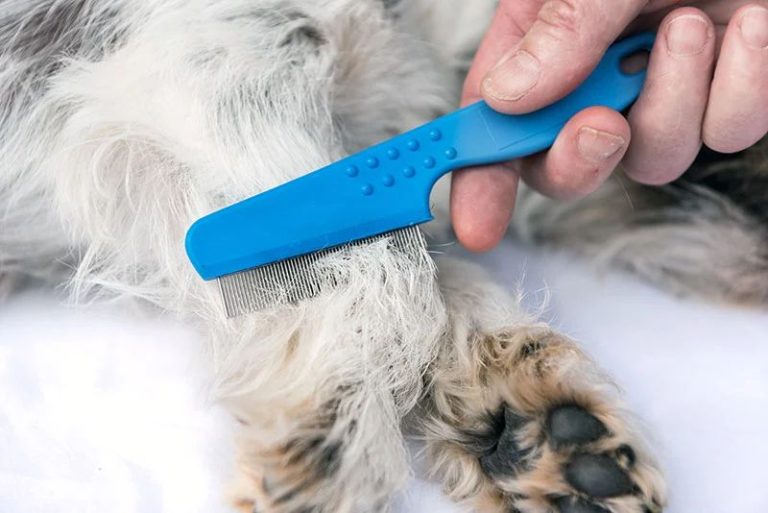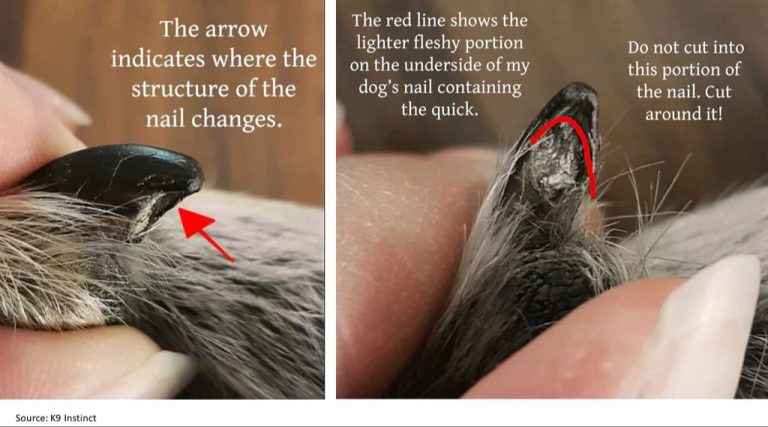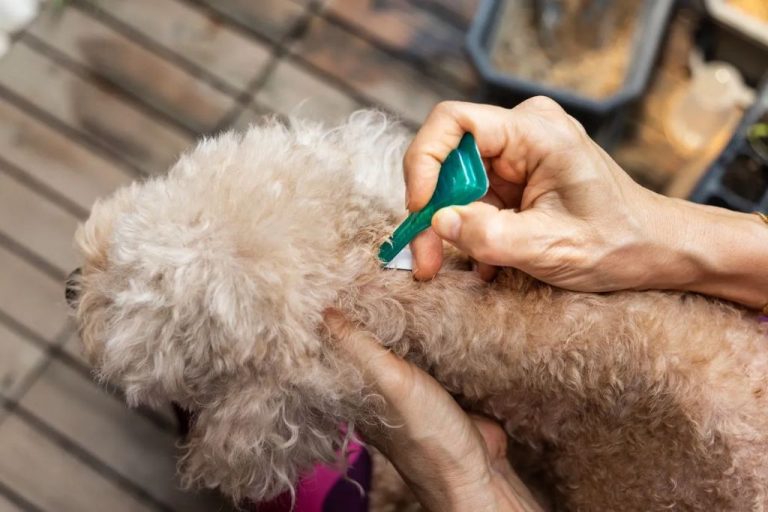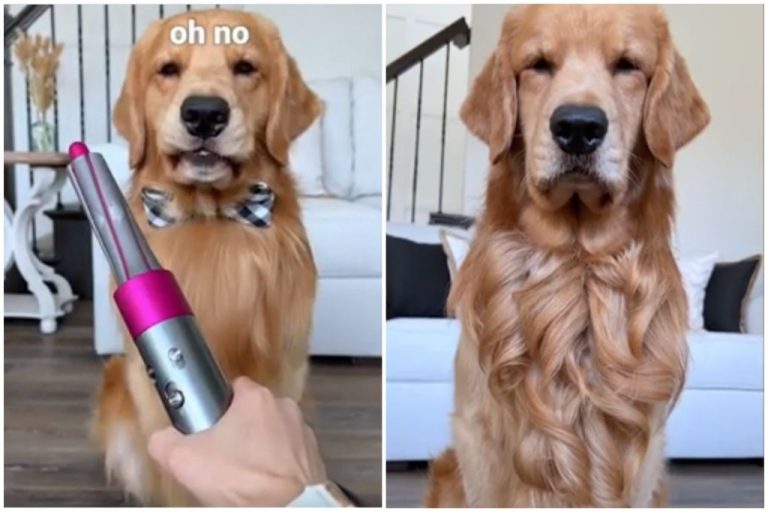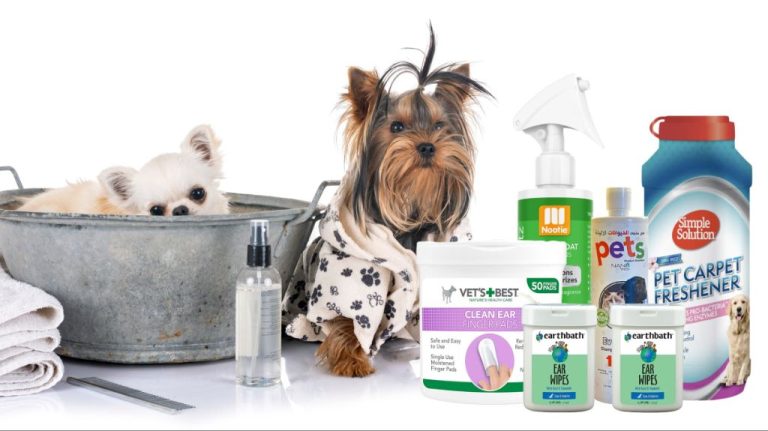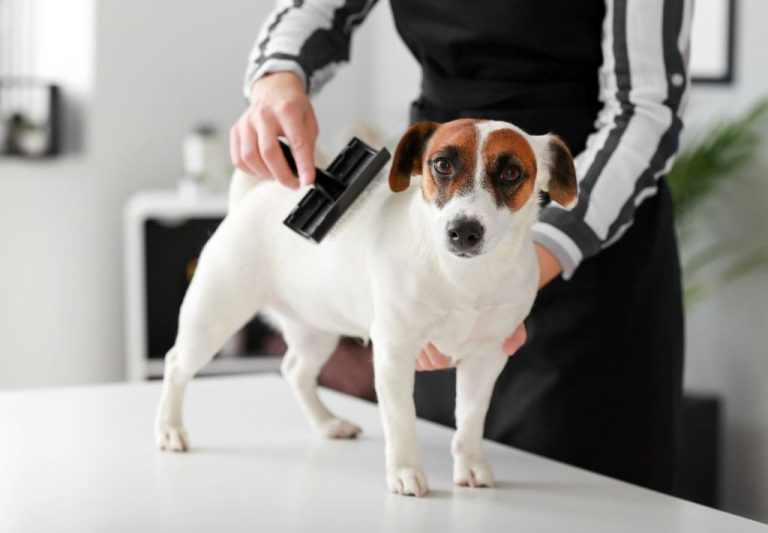Diy Dog Baths: Tips For A Stress-Free Experience
Giving dogs baths at home can be a great way to keep your pup clean in between professional grooming appointments. Baths at home allow you to control ingredients and monitor skin and coat condition more closely. However, it’s important to bathe your dog properly to avoid a stressful experience for you both.
This guide covers tips for giving your dog stress-free baths at home. We’ll go over preparation, supplies, bathing technique, drying, aftercare, and signs of stress to watch for. With some planning and patience, DIY dog baths can be relaxing and rewarding for you and your pooch.
Regular bathing provides important benefits like reducing shedding, controlling odors, and keeping parasites at bay. But it’s essential to create a calm environment and avoid over-washing. Follow these tips to keep bath time positive and enjoyable.
Benefits of Bathing Your Dog
Regularly bathing your dog provides many benefits for their health and hygiene. Bathing helps remove dirt, debris, and oil that can build up in a dog’s coat and on their skin (Source). A clean dog will have a shiny, soft coat and will smell fresh. Frequent baths can also help prevent common skin issues caused by bacteria, yeast, and fungus (Source). The warm water and gentle scrubbing stimulate circulation, bringing more nutrients to the skin’s surface. This helps prevent flaky, irritated skin and reduces odors.
Additionally, regular bathing keeps your dog’s skin and coat clean and free of debris, preventing any odors that can come from dirt, sweat, and buildup. The soothing feeling of a warm bath can also relax your dog both mentally and physically.
Preparation
Before giving your dog a bath, it’s important to properly prepare their fur and nails. According to the article “How to Bathe a Dog: Step-by-Step Tips from a Professional Groomer” on Chewy, you should start by brushing out your dog’s coat to remove any tangles or mats. Use a slicker brush and work in sections to brush all the way down to the skin. Pay close attention to problem areas like the hind legs, tail, and belly.
It’s also a good idea to trim your dog’s nails before the bath, as advised in “A Quick Guide to Dog Baths” on Primped Pooches. Long nails can easily scratch you or your dog during the bathing process. Use nail clippers designed for dogs and trim just the very tip of each nail. You may only need to trim the dewclaws since those nails grow faster than the others.
Proper brushing and nail trimming beforehand will make the bath go much smoother for both you and your dog.
Location
There are a few good options for where to bathe your dog at home:
Bathtub
Using your own bathtub is a convenient and mess-free way to bathe your dog. Make sure to use a non-slip mat or towel on the bottom of the tub so your dog doesn’t slip. Draw the shower curtain closed so your dog feels more secure. Consider getting a handheld showerhead attachment to make rinsing easier. Make sure to thoroughly clean the tub afterwards.
Utility Sink
A utility sink, like those found in laundry rooms or garages, works well for bathing dogs. The elevated height makes it easier on your back. Make sure your dog can comfortably fit in the sink. Place a non-slip mat down and have treats handy. Drain the dirty water outside when finished.
Outside with Hose
When the weather is warm, bathing your dog outside with a hose allows for easy clean-up. Make sure to use a non-slip surface like grass or a bath mat. Use a spray nozzle to control water flow. Rinsing shampoo thoroughly is important, so a hose makes that easier. Keep a towel handy for drying.
Bathing Supplies
Before giving your dog a bath, make sure you have all the necessary supplies ready. Some essential items include:
- Non-slip tub mat – Lay this in the bottom of your tub to prevent your dog from slipping. The rubber material provides traction for their paws. A non-slip mat helps make bath time less stressful for you both. (“Essential Dog Grooming Supplies Checklist”, https://www.animalbehaviorcollege.com/blog/animal-career-advice/grooming/dog-grooming-supplies/)
- Dog shampoo – Use a gentle, tearless dog shampoo formulated for canine skin and coats. Avoid human shampoos which can dry out a dog’s sensitive skin. (“Dog Grooming Checklist”, https://www.petpoisonhelpline.com/uncategorized/dog-grooming-checklist/)
- Towels – Have several absorbent towels on hand to dry your dog off after their bath. Choose larger towels that can fully wrap around your dog.
With these key supplies ready, you’ll be fully equipped to bathe your dog without stress or mess.
Bathing process
The bathing process involves several steps to thoroughly clean your dog’s coat and skin without causing stress. First, use lukewarm water and fully wet your dog’s fur, taking care not to get water in their eyes. According to Chewy, you should “Begin lathering your dog at the tail area, working up to the back of their ears.”1 Pay extra attention to dirtier areas like the feet, legs, and belly.
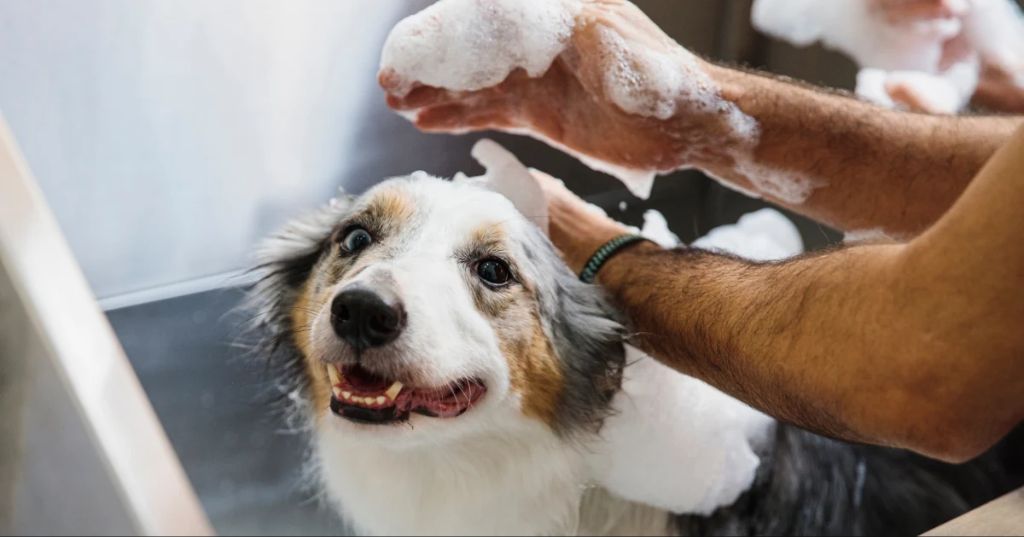
Gently massage shampoo into your dog’s fur to lift dirt and distribute suds. Rinse thoroughly to avoid leaving residue that could dry out their skin. Be extremely careful when washing the face – use a damp washcloth to wipe around the eyes and ears. Avoid getting water and soap inside the ears. Rinse well and dry the inside of ears with a clean towel.
Drying
Properly drying your dog after a bath is essential for their comfort and health. Any moisture left on their skin can lead to irritation and infections. Here are some tips on safely drying your dog:
Towel drying is the most common method. Be sure to use a high quality towel that absorbs moisture well. Gently pat dry your dog’s coat, taking care around sensitive areas like eyes, nose and ears. Avoid rubbing rigorously as this can cause skin irritation. For long haired dogs, use your fingers to lift the hair and blot the skin.
Blow drying on a low setting can speed up the drying process. Keep the dryer 6-12 inches from the dog’s body to avoid burning their skin. Frequently check that the air is not too hot by holding your hand in front of the nozzle. Pay extra attention to drying between skin folds where moisture easily gets trapped. Refer to the dryer’s manual for proper use.
Avoid letting your dog air dry. Leaving their coat wet for too long can cause health issues. Stick to gentle towel drying and low heat blow drying for the safest methods.
Aftercare
After bathing your dog, it’s important to provide proper aftercare to keep their skin and coat healthy. This includes brushing, trimming, and applying skin/coat treatments.
Brushing is key for distributing the dog’s natural oils through their fur and preventing tangles and mats. Use a slicker brush or undercoat rake to brush all the way down to the skin. Be gentle around any tangles – don’t pull. Regular brushing can help bring out dead undercoat and reduce shedding.
Trimming nails, hair around the feet, and other fur as needed will keep your dog neat and tidy after their bath. Long hair can trap moisture, dirt, and debris. Ask your groomer for tips on safe at-home trimming.
Applying a moisturizing conditioner, vitamin spray, or coconut oil (Vitacanis) can replenish your dog’s skin after bathing. Look for products with soothing natural ingredients. Focus on areas prone to dryness, like paws, elbows, and noses.
Signs of Stress
Some common signs that indicate your dog is feeling stressed during bath time include shaking, hiding, panting, and attempts to escape. According to VCA Hospitals, shaking is a normal body response dogs exhibit after a bath, but excessive shaking can signal stress. Hiding behaviors like retreating to a corner or under furniture demonstrate your dog is trying to avoid the stressful situation. Rapid panting that is unrelated to heat or exercise often reflects anxiety. Dogs may also try to flee the bath area or resist being led into it as an escape response.
Other signs outlined by Chill Paws include vocalizing, trying to scratch or bite, and lack of engagement. Paying attention to these stress signals can help you identify when your dog is becoming distressed so you can take steps to relieve their anxiety.
Tips for a stress-free bath
One of the best ways to make bath time less stressful for your dog is to slowly familiarize them with the process. Start by bringing your dog into the bathroom and giving them treats and praise for calm behavior. Over multiple sessions, work up to running the water, wetting a washcloth, and eventually a full bath.
It’s also very helpful to use treats, toys, and other distractions during the actual bath. Give your dog a steady stream of tiny treats to keep them occupied, or let them play with a floating bath toy. You can also fill a Kong with peanut butter to serve as a long-lasting distraction. Just be sure to keep interactions happy and positive throughout.
As recommended in this AKC article, desensitizing your dog slowly and using positive reinforcement makes bath time much less stressful for you both.

